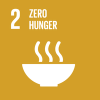2025
Vine physiology
Name: Vine physiology
Code: BIO13824M
6 ECTS
Duration: 15 weeks/156 hours
Scientific Area:
Biological Sciences
Teaching languages: Portuguese
Languages of tutoring support: Portuguese, English
Regime de Frequência: Presencial
Sustainable Development Goals




Learning Goals
To know the morphology and the phases of vegetative and reproductive development of the vine.
To know the vine's water relations and the physiological effects of efficient water management.
To know the field methodology based on physiology, which maximises the production of sugars in the vine.
To know the "state of the art" technological methodologies used to monitor the physiological state of the grapevine in the field; for instance water status and water consumption, sugar production capacity.
Understand the physiological processes that influence the expression of vegetative growth and fruit development on the grapevine, with particular emphasis on the biochemistry of compounds with interest for wine production.
Ability to solve questions, in order to optimize production, by resorting to the knowledge acquired about the functioning of the grapevine and validating the hypotheses formulated using the experimental method.
Contents
Anatomy and morphology of the root, stem, leaf and buds of the vine. Growth and annual cycle. floral differentiation, fertility and setting.
2. Water relations:
2.2. Water consumption and evaluation of the water status of the vine.
2.3 Stomatic control mechanisms (e.g. variability between grape varieties, graft carriers, growth regulators, environmental factors)
2.4 Water movement in the plant: absorption, translocation and management of water stress. 2.5. Watering management and physiological effects on the vine.
3. Photosynthesis at the level of the vine.
3.1 Crown structure and radiation distribution, photosynthesis reactions dependent on light.
3.2. absorption and photosynthetic reduction of CO2. Response of photosynthesis to environmental factors.
3.3. synthesis of starch and sucrose. Redistribution of sugars in the plant. Storage, use and transport of sugars in the plant.
4- Composition and development of the berry. Genetic, vine driving and environmental f
Teaching Methods
Theoretical and practical classes (laboratory and field)
Presentation of seminars
The continuous assessment consists of 2 written frequency tests with 50% of weight each. Alternatively, a final exam can be chosen.
Teaching Staff (2023/2024 )



